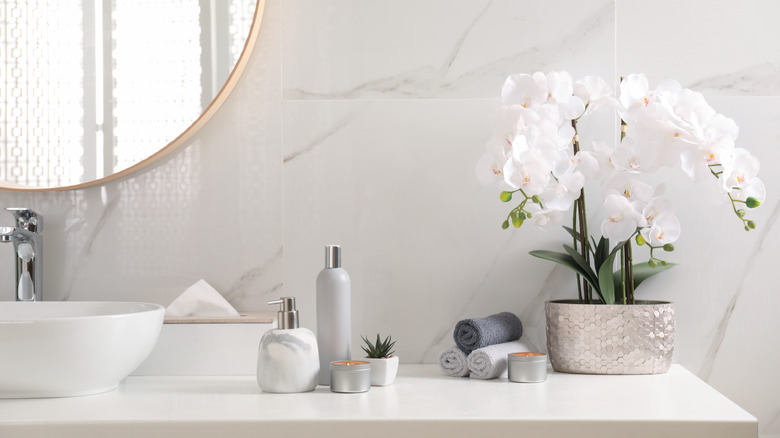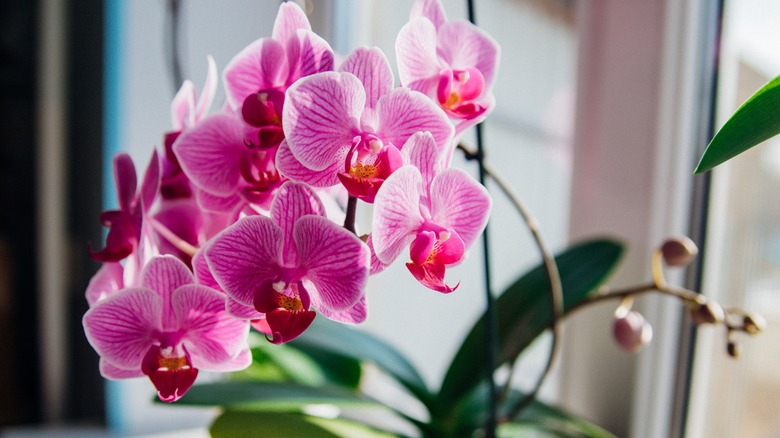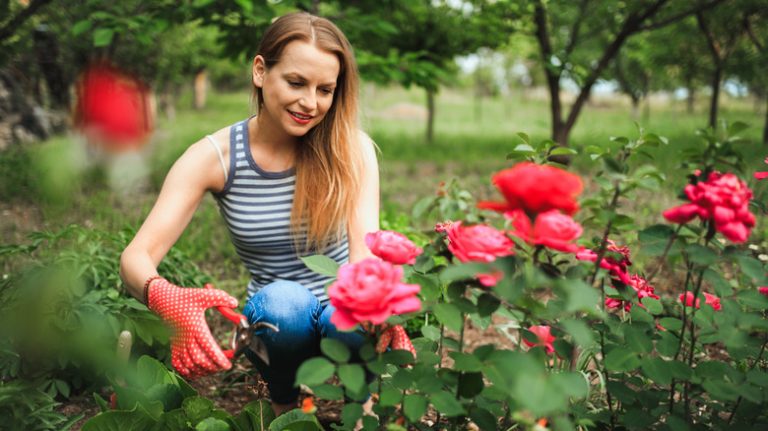Orchids are often dubbed as difficult plants to grow. Partially, this is because after they flower and the stems die back, people often assume that they are dead when they are really going dormant until their next flowering season! While it may sound strange, the best place to grow orchids in your home is actually in your bathroom. This is because orchids love humidity, and bathrooms tend to be the most humid part of a home.
Rare, tropical, and beautiful, orchids are always a special treat that brings a refreshing energy to the home. Sometimes, though, they can be a little finicky. The best way to ensure a happy orchid is to set up conditions that mimic its natural environment. Typically, this looks like bright, indirect light and over 50% humidity. Those kinds of humidity levels are difficult to achieve inside your home. However, the bathroom always has higher humidity than other areas of your house, making it an excellent spot for your orchids! Additionally, since the bathroom is a highly frequented room, it gives you an easy way to keep an eye on your orchids.
Understanding your orchid

Orchids belong to the family Orchidaceae, the largest and oldest family of flowering plants in the world. Orchids have been around for around 120 million years, suggesting that they were alive before the continents separated! With over 24,000 species, the orchid family is the largest plant family in the world. Expansive and ancient, orchids are a truly fascinating species with a much longer history than one might imagine when strolling through their grocery store and deciding to take home a Phaelenopsis orchid! Additionally, most orchids are epiphytic, meaning they do not need to grow in soil; instead, they grow on tree bark and collect nutrients and water from the air. While some terrestrial orchids grow in the ground, they are less common than epiphytic orchids, at least at the commercial level.
Orchids are often purchased as gifts for celebrations, and many times, as soon as the flowers die back, they’re thrown out. It’s sad to think about all of the orchids thrown out due to simple misunderstandings. Since most people typically don’t understand how orchids work or that they only bloom once a year, they think they are challenging to care for and give up. While there are some common orchid plant care mistakes, knowing the basics of how Orchids function in their natural environment can help avoid any orchid fatalities and disappointments.
Why is the bathroom the perfect place to grow orchids?

There are a few key things to keep in mind when it comes to successfully caring for indoor orchids. First and foremost, as mentioned above, orchids are epiphytic, meaning they draw nutrients and moisture from the surrounding air. This is why humidity plays a key role in growing healthy orchid plants, making the bathroom the perfect home for your orchids! In addition to humidity, most orchids need bright, indirect light, so a southern or eastern-facing window is suitable for orchids. However, any natural light in your bathroom will help your orchid thrive. Adequate humidity and light also help to encourage regular flowering in orchids.
Some studies even suggest that growing a moth orchid near your toilet can help deodorize smells in your bathroom! Not only are orchids gorgeous to look at, but growing them in your bathroom will spare you from some of the common orchid killers like inadequate lighting and humidity. However, keep in mind that you still have to water your orchid; humidity alone is not enough. It’s better to let your orchid dry out between watering than to overwater it, as overwatering can quickly kill your orchid plant. Not only are humidity and light important, but so is airflow, so if you can open the window and let some fresh air in occasionally, it will help keep your orchid happy and healthy.




